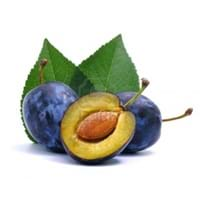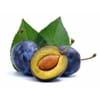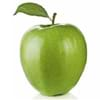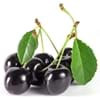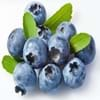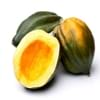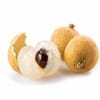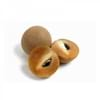Health Benefits
Cancer prevention, Cures gastro-intestinal troubles, Heart care, Increase in haemoglobin, Prevents high blood pressure
Anti-aging benefits, Anti-inflammatory properties, Asthma treatment, Body hydration, Cancer prevention, Digestive aid, Skin cleansing, Skin rejuvenation
General Benefits
Anti-inflammatory properties, Boosts immune system, Digestive aid, Eye care, Flu treatment, Helps in weight loss, Maintains healthy cholesterol level, Treatment of common cold
Anti-inflammatory properties, Body hydration, Controls blood pressure, Digestive aid, Maintains healthy cholesterol level
Skin Benefits
Anti-aging benefits, Brightens and lightens complexion, Reduces wrinkles, Skin revitalization, Treatment of dark spots
Anti-aging benefits, Brightens and lightens complexion, Hydrates skin
Hair Benefits
Prevents hair loss, Promotes longer and healthier hair, Protects hair, Remedy for split ends, Treatment of dandruff
Promotes longer and healthier hair, Regulates hair growth
Allergy Symptoms
Abdominal pains, Anaphylaxis, Vomiting
Breathing difficulty, Decrease in blood pressure, Dizziness, Eczema, Hives, Runny nose, Swelling of mouth, tongue or lips, Watery eyes
Side Effects
Allergic reaction
Allergic reaction, Bloating, Diarrhoea, Indigestion, Intestinal gas, Nausea, Vomiting
Best Time to Eat
As a snack in the late afternoon, Don't consume at night and before bed, Don't eat after meal, Morning time (before lunch)
As a snack in the late afternoon, Don't consume at night and before bed, Eat the fresh ones, avoid mixing with any other foods, don't eat after meal., Strictly avoid empty stomach
Vitamin B5 (Pantothenic Acid)
Vitamin C (Ascorbic Acid)
Vitamin K (Phyllochinone)
Calories in Fresh Fruit with Peel
Not Available
Calories in Fresh Fruit without Peel
Not Available
Calories in Frozen Form
Not Available
Calories in Canned Form
Not Available
Type
Tree fruit
Berry, Melon
Varieties
Merryweather Damson, Shropshire Prune, President plum, Damson farleigh and Damson langley bullace
Sugar Baby, Sangria, Golden Midget, Starlight, Jubilee, Starbrite, Extazy, Stars 'n' Stripes, Mickylee, Yellow Baby, Yellow Doll, Little Baby Flower, Sweet Favorite and Cream of Saskatchewan
Color
Dark purple
Canary yellow, Coral red, Orange, Salmon yellow, Scarlet red, White
Taste
Juicy, Sweet, Tart
Sweet
Origin
Syria
Southern Africa
Soil Type
Clay, Loam, Moist, Sandy loam, Well-drained
Sandy, Well-drained
Climatic Conditions
Cold
Dry, Hot
Facts about
- The name Damson originates from the original name 'Damacus plum'.
- Damson wine was very popular in 19th century.
- This fruit is often used in jams due to its slightly tart behaviour.
- Watermelon contain 91% of water.
- In Japan & Chine, watermelon is a popular gift to bring a host.
- Entire watermelon is edible, even the rinds & seeds.
- There are more than 1200 varieties grown in the world.
Top Producer
United Kingdom
China
Other Countries
Ireland, United States of America
Algeria, Brazil, Egypt, Iran, Kazakhstan, Mexico, Spain, Turkey, United States of America
Top Importer
United States of America
Germany
Top Exporter
France
China
Botanical Name
Prunus domestica subsp. insititia
Citrullus Lanatus
Synonym
Not Available
Citrullus vulgaris
Subkingdom
Tracheobionta
Tracheobionta
Division
Magnoliophyta
Magnoliophyta
Class
Magnoliopsida
Magnoliopsida
Subclass
Rosidae
Dillenhidae
Order
Rosales
Cucurbitales
Family
Rosaceae
Cucurbitaceae
Species
Prunus domestica subsp. insititia
C. lanatus
Generic Group
Not Available
Gourd
Difference Between Damson and Watermelon
We might think that Damson and Watermelon are similar with respect to nutritional value and health benefits. But the nutrient content of both fruits is different. Damson and Watermelon Facts such as their taste, shape, color, and size are also distinct. The difference between Damson and Watermelon is explained here.
The amount of calories in 100 gm of fresh Damson and Watermelon with peel is 46.00 kcal and Not Available and the amount of calories without peel is Not Available and 30.00 kcal respectively. Thus, Damson and Watermelon belong to Low Calorie Fruits and Low Calorie Fruits category.These fruits might or might not differ with respect to their scientific classification. The order of Damson and Watermelon is Rosales and Cucurbitales respectively. Damson belongs to Rosaceae family and Watermelon belongs to Cucurbitaceae family. Damson belongs to Prunus genus of Prunus domestica subsp. insititia species and Watermelon belongs to Citrullus genus of C. lanatus species. Beings plants, both fruits belong to Plantae Kingdom.
